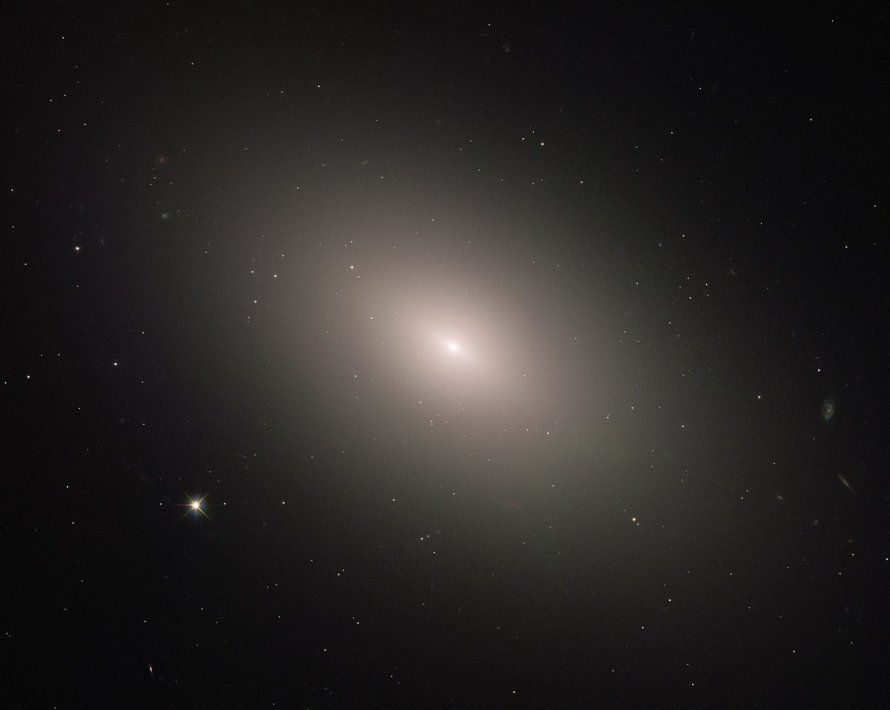M59 (NGC 4621)
Messier 59 (NGC 4621) is an elliptical galaxy located in the constellation Virgo in the Virgo Cluster of galaxies. M59 is 50100000 light years away from Earth.
M59 is best viewed during late spring, is magnitude 10.6, and can be viewed with small telescope. M59 is 5.4' x 3.7' in apparent size. For reference, the full moon is 30'.
Observing difficulty: Intermediate
- Name:
- Type:
- elliptical galaxy
- Constellation:
- Virgo
- NGC or IC:
- NGC 4621
- Magnitude:
- 10.6
- Viewing:
- small telescope
- Size:
- 5.4' x 3.7'
- Distance (light years):
- 50100000 LY
- RA:
- 12h 42.1m
- Dec:
- 11 39'
- Season:
- late spring
- Galaxy group:
- Virgo Cluster
- Messier Marathon #:
- 61
* The naked eye can see up to magnitude ~7-8 objects under ideal dark sky conditions.
A Majestic Elliptical Galaxy in the Virgo Cluster
Messier 59 (M59), cataloged as NGC 4621, is a majestic elliptical galaxy located in the constellation Virgo. As part of the Virgo Cluster of galaxies, M59 offers astronomers a unique glimpse into a type of galaxy that is often overlooked due to the more visually striking nature of spiral galaxies.
Historical Background
Messier 59 was discovered on April 11, 1779, by astronomer Johann Gottfried Koehler, just days before Charles Messier discovered it independently. This elliptical galaxy is one of about 2,000 galaxies that reside within the Virgo Cluster, the nearest large galaxy cluster to the Milky Way. The Virgo Cluster's galaxies range from dwarf ellipticals to giant ellipticals like M59.
Physical Characteristics
Messier 59 is classified as an E5 elliptical galaxy, meaning it has an intermediate degree of ellipticity and is almost spherical. It is relatively large, with a radius of approximately 42,000 light-years and a mass of about 270 billion solar masses. It hosts a large population of globular clusters, with about 2,200 identified to date, significantly more than the 150-200 globular clusters found in the Milky Way. Additionally, the central region of M59 harbors a supermassive black hole estimated to have a mass of 270 million times the mass of the Sun.
Magnitude and Size
Messier 59 has an apparent magnitude of about 10.6, making it challenging to spot with the naked eye but easily observable under dark skies with a small telescope or good binoculars. In terms of angular size, M59 spans about 5.4 by 3.9 arcminutes on the sky. This size is roughly one-sixth the width of the full Moon, making it reasonably significant for a galaxy at such a distance.
Scientific Significance
The study of M59 provides insight into the characteristics and evolution of elliptical galaxies. Notably, the high number of globular clusters around M59 offers researchers a chance to understand how these systems form and evolve. The presence of the central supermassive black hole, identified through the motion of stars near the galaxy's center, also provides astronomers with valuable data about the relationship between galaxies and their central black holes.
Finding and Viewing Messier 59
M59 is located in the constellation Virgo, making it easier to find during the spring months when Virgo is high in the sky for Northern Hemisphere observers. It's located approximately 4 degrees southeast of the bright star Epsilon Virginis.
Under dark skies, M59 is visible in a small telescope as a faint patch of light. With an 8-inch or larger telescope, the galaxy's bright core and elliptical shape become more apparent. However, to see any detail within the galaxy, such as its globular clusters, one would need to use long-exposure astrophotography or a larger amateur telescope.



